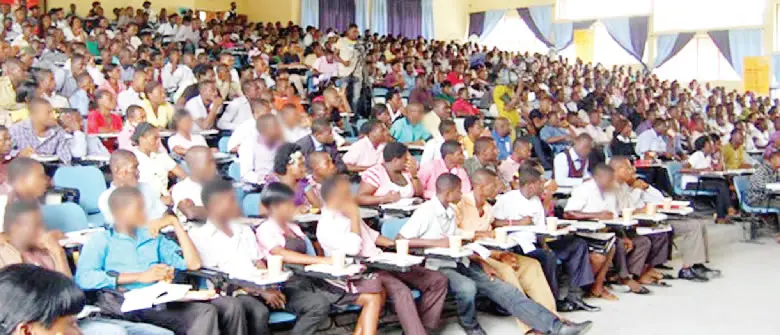Many countries are being squeezed by increasing interest payments and high debt redemptions. The economic scarring of the pandemic, conflicts around...
Vous n'êtes pas connecté
- English
- Français
- عربي
- Español
- Deutsch
- Português
- русский язык
- Català
- Italiano
- Nederlands, Vlaams
- Norsk
- فارسی
- বাংলা
- اردو
- Azərbaycan dili
- Bahasa Indonesia
- Հայերեն
- Ελληνικά
- Bosanski jezik
- українська мова
- Íslenska
- Türkmen, Түркмен
- Türkçe
- Shqip
- Eesti keel
- magyar
- Қазақ тілі
- Kalaallisut ; kalaallit oqaasii
- Lietuvių kalba
- Latviešu valoda
- македонски јазик
- Монгол
- Bahasa Melayu ; بهاس ملايو
- ဗမာစာ
- Slovenščina
- тоҷикӣ ; toğikī ; تاجیکی
- ไทย
- O'zbek ; Ўзбек ; أۇزبېك
- Tiếng Việt
- ភាសាខ្មែរ
- རྫོང་ཁ
- Soomaaliga ; af Soomaali
Rubriques :
 Maroc - EURASIAREVIEW.COM - A la une - 11/Jul 23:44
Maroc - EURASIAREVIEW.COM - A la une - 11/Jul 23:44
Biden’s Student Loan Gift SAVE Is Simply A Wealth Transfer – OpEd
By Kevin Van Elswyk The federal student debt loan amount is $1.7 trillion. This debt portfolio is an installment personal loan. Payments occur monthly. Active students have loan totals not due this year. We have no idea how much of the total will be repaid. The Saving on a Valuable Education (SAVE) plan is President Joe Biden and Secretary of Education Miguel Cardona’s reply to the Supreme Court, who ruled the administration’s original sweeping forgiveness program was unconstitutional. The SAVE plan was announced in August 2023. The White House bulletin included a table of payment amounts, indexed by the number of dependents and size of loan. It is the greatest gift for all income-dependent student-debt payoff plans. It is a Trojan horse for the state to control higher education. The “original” student loan program from the sixties repaid loans plus interest in a straightforward installment-style plan. A $7,500 loan might take ten years to fulfill. Larger loans received longer terms. The federal government’s interjection into debt financing came with the Income-Contingent Repaymentplan, passed in the1993Student Loan Reform Actsigned by then-president Bill Clinton. The Student Loan Reform Act set payments at 20 percent of discretionary income. After twenty-five years of eligible payments, the plan writes off any outstanding debt.This was the first signal that the plans anticipated partial payments on student loans. The slide toward free university accelerated in 2007 with income-based repayment.Monthly payments were calculated on what a student could pay, not what was owed, resetting Income-Contingent Repayment planpayments from 20 percent of income to 10 percent or 15 percent ofdiscretionary incomedepending on the date the borrower first started borrowing student loans. In 2010, President Barack Obama signed theHealth Care and Education Reconciliation Actof 2010. Both the lending and collecting of loans was consolidated within the Department of Education (DOEd). This actnationalizedthe student loan process, putting it in the hands of political appointees, managed by an unprepared, non-banking-experienced staff. In 2010, student loan debt washalfthe 2023 total. Income-dependent payback plans describe the four remaining options for paying student loans. SAVE is a new income-dependent plan. There are four common elements to all income-dependent plans. Published poverty wages: Poverty wages are deducted from adjusted gross income to produce “discretionary income.” Early plans deducted 100 percent of poverty wages. In the Affordable Care Act of 2010, poverty wage deductions became 150 percent. Later, the DOEd increased the multiplier to 200 percent. SAVE uses 225 percent of poverty wages. Payment percentage: Discretionary income is assessed by a fixed percentage to create a payment due. The original plan from 1993 used 20 percent of discretionary income. This changed to 15 percent of discretionary income in 2007. President (“I have my phone and a pen”) Obama issued a presidential memorandum reducing it from 15 percent to 10 percent. Length of loan and unpaid balances: If there is an unbroken record of payments, unpaid balances at the end of a loan term are forgiven. The DOEd waved the surrender flag for taxpayers.All loans will not be paid back to the Treasury. Special status: Most recently, the DOEd forgave the administration recently using extralegal authority for 1.5 million debtors with $28 billion in debts that were expunged by a department ruling of “substantial misconduct” by colleges that closed early. $45.7 billion was zeroed out by reclassifying 662,000 public service workers. This type of skullduggery is easier in the SAVE plan. SAVE uses 225 percent of poverty wages as a deduction to reduce the subjective discretionary income. This reduced discretionary income uses a 5 percent calculation to create a payment due. The smallest amount of discretionary income assesses at the smallest percentage as calculated by the White House. The SAVE plan is not eligible for loans in default. However, a phone call to the DOEd and enrollment in the “Fresh Start” program makes previously ineligible loans available for SAVE. Student payments that are seventy-five days delinquent will automatically enroll in the SAVE program. This can start the delinquency clock on loans greater than 270 days, erasing the record from credit reports. SAVE will eventually bring all loan payments under one process and one department, directed by the president. We cannot be certain of the ultimate costs. With appropriate disclaimers (for static budgeting with hyperdynamic plans), the Congressional Budget Office suggests that the cost of implementing SAVE couldcost$230 billion.Based on a five-year-old study, justunder halfof all student debt is estimated to be on income-dependent plans. The current number islikely greaterbased on trends. These plans have variable monthly payments during the term and have a forgiveness option, making any predictions of a final cost speculative. These plans are continually in flux. Any estimate of cost is a guess, more so after covid. SAVE has legal challenges from attorney generals from three states. This challenge is not creating headlines. Without an injunction or congressional action, the plan would be initiated in July 2024. In June, twenty-five courts inKansas and Missouriblocked further enrollment in the SAVE plan. The SAVE plan fits the long-term goal of increased federal control of public higher education. The president can manipulate the plan to modify payments for a population demographic such as “dreamers” or for a major employment segment such as green energy ambassadors. The courts’ challenge to this plan must succeed. We need a pause for a better fix on the actual debt. Both political parties have mismanaged this program. There are responsible measures in Congress to bring forward to cap this vote-buying scheme and protect taxpayers. About the author: Kevin Van Elswyk is a graduate of Wheaton College (Illinois) with a BA in Literature and a minor in Philosophy. He received an MBA from City University and has completed post grad and certification courses over his career. After 36 executive years with International Commercial Casualty & Risk Management Companies Kevin retired in 2018. Kevin is a 10-year adjunct associate professor most recently with University of Maryland’s Global Campus. He lives in Brookfield Wisconsin and happily has time to read, think, write, and wait for fishing season. Source: This article was published by the Mises Institute
Articles similaires
Financial Literacy 101: How IRS Debt Forgiveness Can Help Manage Student Loans?
In today’s world, financial literacy is more crucial than ever. As education costs continue to rise, many students find themselves burdened with...
FULL LIST: NELFUND clears another 22 institutions for student loan
%BlogLink% %FearturedImage% %PostLink% The Nigeria Education Loan Fund (NELFUND) said it has cleared an extra 22 state-owned tertiary institutions to...
Mortgage Arrears Still Sitting Pretty In Canada — But Perhaps Not For Long
Despite the fact that arrears for auto loans, credit cards, home equity lines of credit, and unsecured lines of credit are all on the rise, mortgage...
"The Safety and Security of all Nigerians are Paramount" - Tinubu To Security Agencies, Urges Protesters to Suspend Further Demonstrations
President Bola Tinubu has urged the security operatives to continue to maintain peace, law, and order in the country following the necessary...
NELFUND Approves Student Loans for 22 Additional State-Owned Institutions
The Nigerian Education Loan Fund (NELFUND) has cleared 22 more state-owned tertiary institutions to apply for student loans. In a statement posted on...
NELFUND continues student loan disbursements across tertiary institutions
Nigerian Education Loan Fund, NELFUND has continued disbursing substantial student loans to institutions and students nationwide. As of August 2,...
Student loan: NELFUND onboards 22 more public institutions
The Nigeria Education Loan Fund (NELFUND) said it has cleared an extra 22 state-owned tertiary institutions to apply for student loans. The...
NELFUND Clears a Further 22 State-Owned Tertiary Institutions for Student Loan Application
The Nigeria Education Loan Fund (NELFUND), the fund has announced that students from the following 22 state-owned tertiary institutions can now apply...
Richmond Hill Mortgage Lender Placed In Receivership Amid $10M Debt, Claims Of Fraud
According to filings in the Ontario Superior Court of Justice, in early-August, the Richmond Hill private mortgage lender Equityline SPV Limited...
Les derniers communiqués
-
Adobe Brings Conversational AI to Trillions of PDFs with the New AI Assistant in Reader and Acrobat
Adobe - 21/02/2024
-
Laura Frigenti takes the Helm as Chief Executive Officer of the Global Partnership for Education
Global Partnership for Education - 05/12/2022




